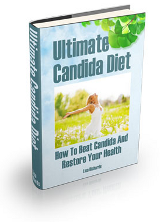Common yeast infections, also known as Candida Albicans, frequently develop in the intestines and then spread to the mouth and vagina. It is a well-known scientific fact that taking antibiotics may also cause secondary infections, including Candida overgrowth. This is because antibiotics, although necessary as treatment for some illnesses, also kill a portion of the good bacteria along with the bad.
A person who takes an antibiotic may have little to no symptoms of Candida until the infection advances into a painful state because of a slow growth rate, and may not notice the connection between taking the prescription and the subsequent outbreak.
In addition to this common problem, numerous other conditions may lead to Candida overgrowth. A few of these causes are:
- other types of prescription medications
- dental fillings that contain mercury or other toxic metals
- excessive consumption of garlic or herbs
- chlorine, typically found in abundance in public water supplies
- exposure to ordinary lawn and garden herbicides or pesticides
- birth control pills
- spermicides
- an unhealthy lifestyle that compromises the immune system
- onset of another illness that compromises the immune system
Probiotics are the opposite of antibiotics (“pro” meaning for and “anti” meaning against) but both have uses in curing medical problems.
The preferred treatment for recurrent Candida is a change in diet. This approach is a natural way to re balance the flora and bacteria found in the human GI tract. It is easy, affordable, and natural and typically produces great results. However, in advanced cases, you may need to consider topical creams, ointments, and prescription drugs.
Supplementing the diet with probiotics (containing live organisms believed to be healthy) may accelerate the restoration of the natural PH of the human body, and consequently, may balance the PH of vaginal walls and strengthen the entire immune system.
The World Health Organization (WHO) describes probiotics as “a live culture containing microorganisms that, when consumed in significant amounts, may provide health benefits for a host body.”
Most people are familiar with the probiotic “lactobacillus acidophilus” because it is a common component found in yogurt and other cultured dairy products. This culture may help some women to restore vaginal health and the immune system. Dannon’s Activia brand yogurt contains a different culture known as “Bifidobacterium Lactis,” and it too may have a similar effect re-balancing the micro flora within the GI tract.
During the last century, researchers and scientists discovered other possible purposes for probiotics. Importantly, they may help in the production of folic acid, niacin, thiamin, riboflavin, pyridoxine, biotin and vitamin K. They may also help to:
- inhibit microbial pathogens
- prevent and treat diarrhea
- reduce lactose intolerance symptoms
- reduce serum cholesterol levels
- aid in vitamin absorption
- improve digestion
- improve nutrient absorption
- help prevent Irritable Bowel Syndrome (IBS)
Food products that contain healthy probiotics are kefir, yogurt, sauerkraut, miso, tempeh and kimchi. In addition, all fermented dairy products contain live cultures.
While taking probiotics, the World Gastroenterological Organization (WGO) recommends consuming 4 to 5 small meals a day, eating slowly, taking in at least 25 grams of fiber, and supplementing Omega-3 fatty acids 3 to 5 times a week.
Additional dietary fiber promotes natural body cleansing and may help prevent Candida overgrowth. You can easily increase fiber intake by eating more fruits, vegetables, nuts and beans. Notice too that low fiber and consuming fried or greasy foods may promote Candida overgrowth.
Before relying on probiotics, discuss your plan with a medical professional. Too little or too much may cause severe consequences.
The Better Health Review gave a perfect rating score to a probiotic called Ultimate Flora, which contains 30 billion active cultures of lactobacillus acidophilus and 20 billion bifido bacteria. The dosage varies.
CLICK HERE FOR MORE INFORMATION ABOUT A USER FRIENDLY TREATMENT PLAN USING PROVEN HOME REMEDIES
